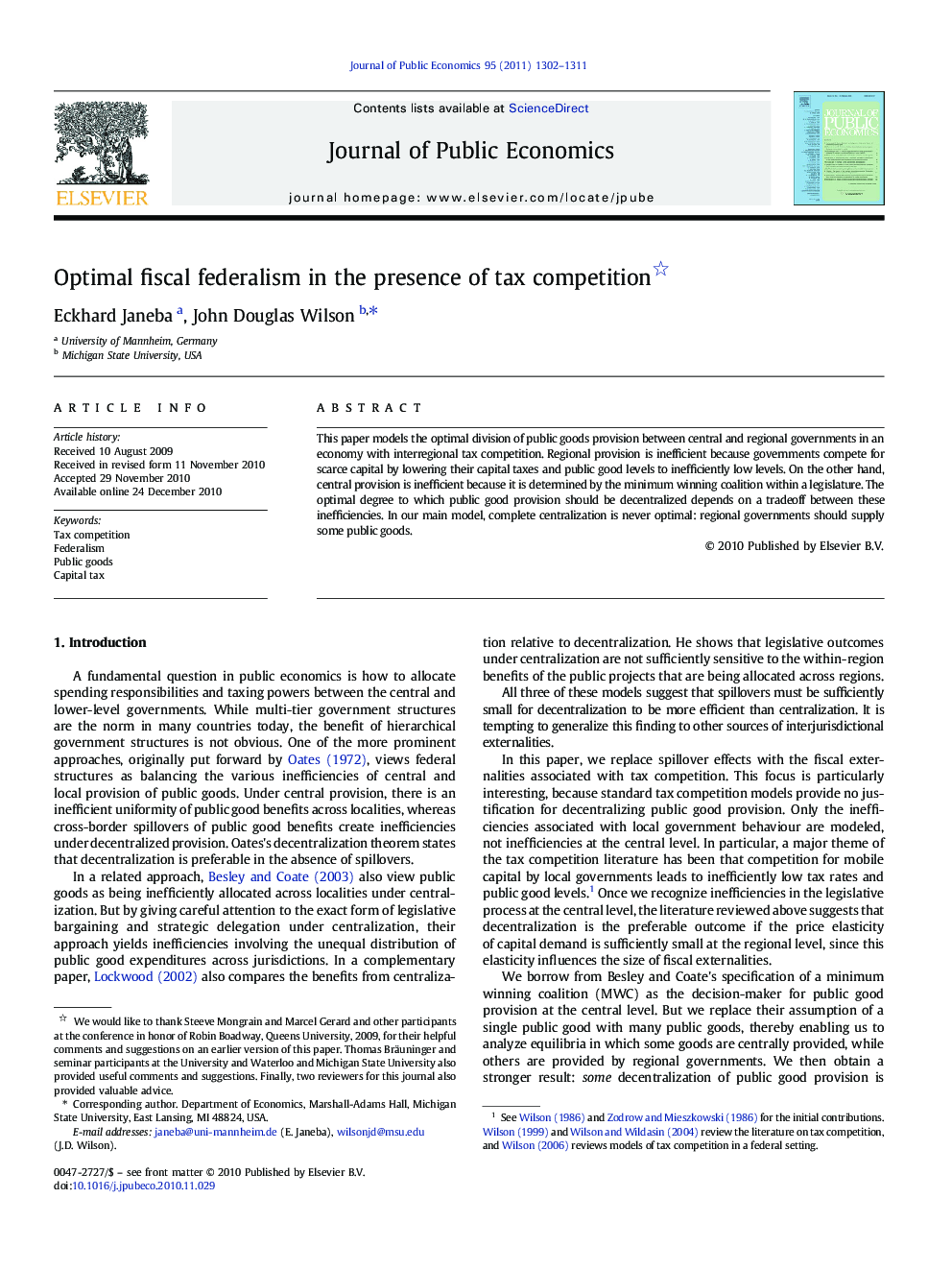| Article ID | Journal | Published Year | Pages | File Type |
|---|---|---|---|---|
| 969020 | Journal of Public Economics | 2011 | 10 Pages |
This paper models the optimal division of public goods provision between central and regional governments in an economy with interregional tax competition. Regional provision is inefficient because governments compete for scarce capital by lowering their capital taxes and public good levels to inefficiently low levels. On the other hand, central provision is inefficient because it is determined by the minimum winning coalition within a legislature. The optimal degree to which public good provision should be decentralized depends on a tradeoff between these inefficiencies. In our main model, complete centralization is never optimal: regional governments should supply some public goods.
Research Highlights► This paper models the optimal division of public good provision between central and regional governments. ► The optimal division involves a tradeoff between the inefficiencies from tax competition at the regional level and the inefficiencies from inefficient legislative behaviour at the central level, where public good provision is controlled by a minimum winning coalition. ► In our main model, complete centralization is never optimal: regional governments should always supply some public goods. ► It is possible for complete decentralization to be optimal. ► If the model is extended to allow regions to top off centrally-provided public good supplies, complete centralization may be optimal, but only if the inefficiencies in centralized provision are sufficiently small.
